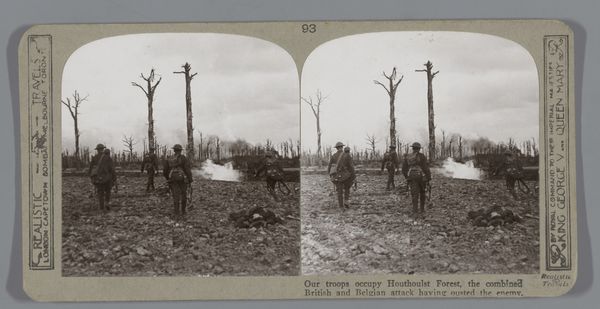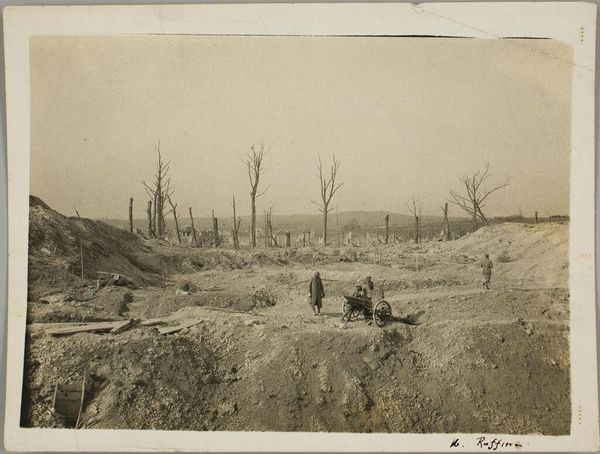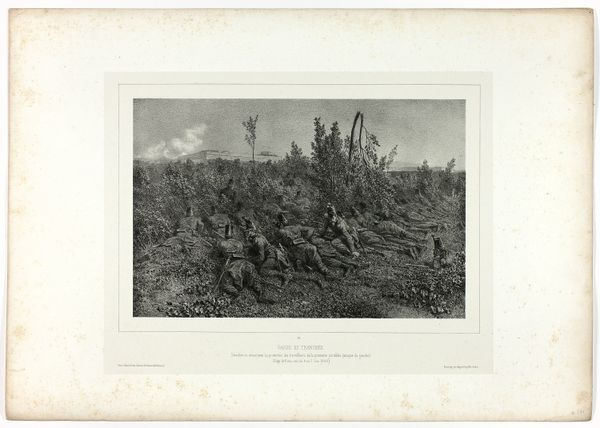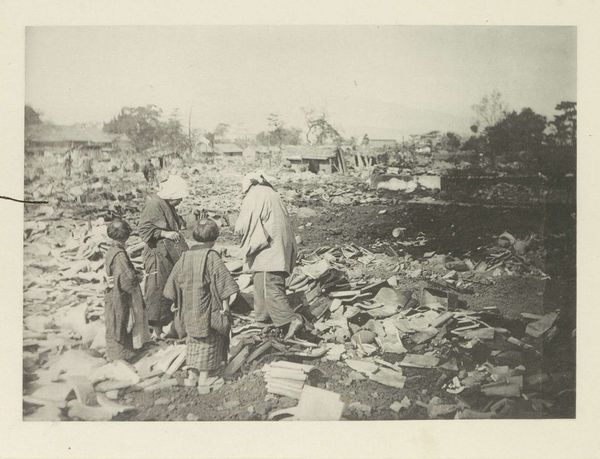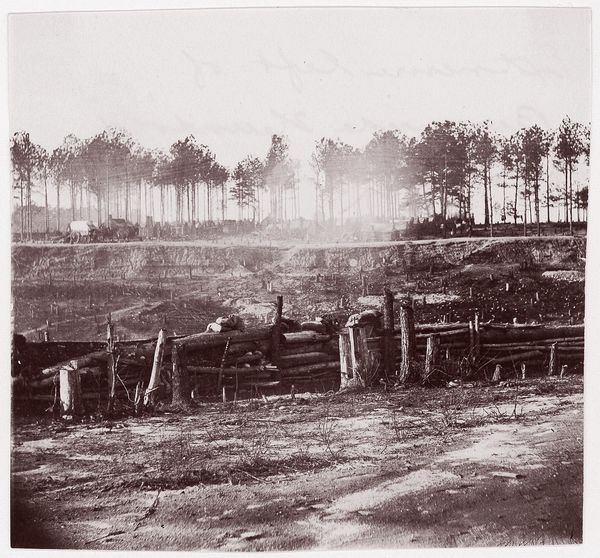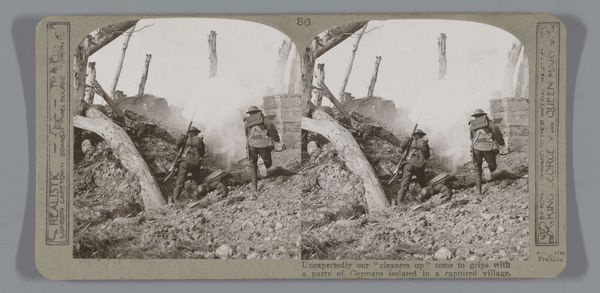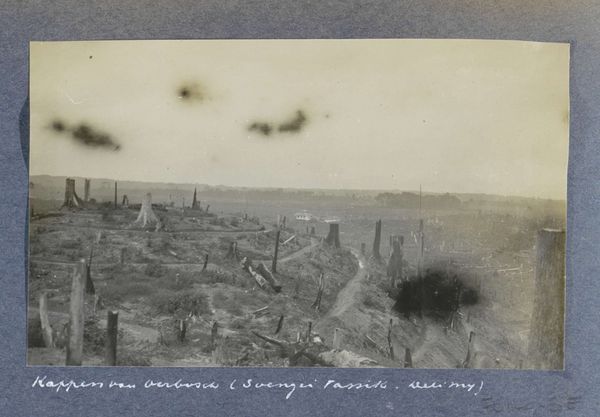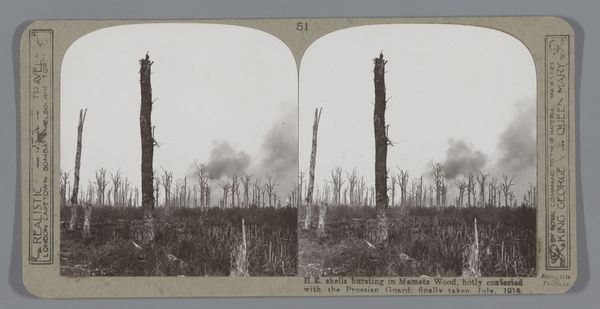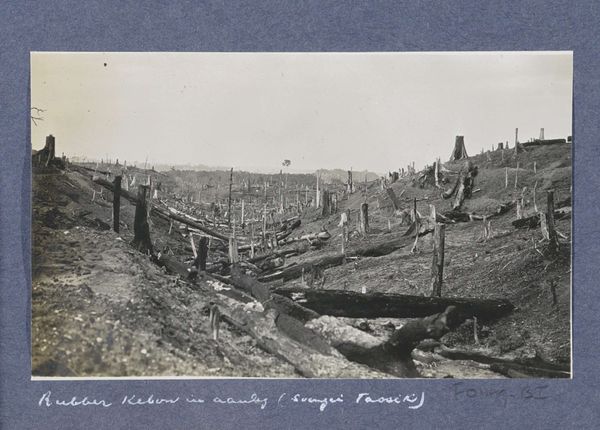
Het woud op den kruin van den Hartmannswillerkopf (...) is door het geschut totaal vernietigd geworden 1914 - 1915
0:00
0:00
photography, gelatin-silver-print
#
print photography
#
war
#
landscape
#
photography
#
forest
#
gelatin-silver-print
#
realism
Dimensions: height 90 mm, width 140 mm
Copyright: Rijks Museum: Open Domain
Curator: What an eerie image. It reminds me of old photographs documenting ghost sightings. Editor: It is quite spectral, in its own way. This gelatin-silver print, created between 1914 and 1915, carries the telling title: "Het woud op den kruin van den Hartmannswillerkopf (...) is door het geschut totaal vernietigd geworden"—"The forest on the summit of the Hartmannswillerkopf (...) has been totally destroyed by gunfire." Curator: The image definitely delivers on that promise. Those shattered trees…they reach upwards like accusing fingers. And the soldiers, mere silhouettes in the devastation. Do you see some underlying religious symbolic meaning, with such desolate barren landscape and the men in such a state? Editor: Certainly the blasted trees echo images of Golgotha. But what grips me is the social impact this image aimed to capture—the sheer violence inflicted upon both the land and those who were sent to fight on it. This wasn't just landscape, it was a strategic, heavily contested point. I am very much concerned with its symbolism in modern wars and military operations where many lives have been and continue to be lost, for example the War in Ukraine. Curator: And within that shattered landscape, we see figures attempting to maintain order, or perhaps merely surveying the damage. I wonder if the figures bring out something that remains: there is still strength despite the disaster. What do you mean? Editor: I perceive it more as a critique, myself. Aren't they literally standing amid ruins? Their seeming composure seems a rather weak counterpoint to such all-consuming loss and destruction. Are they really safe despite what they portray? Curator: Maybe what’s safe is that these images function as mnemonic devices, embedding the visual memory of these violent conflicts in our minds. I see in them continuity and permanence, don't you? The cultural weight the photographic symbol takes on as the decades progress? Editor: True. And I would suggest that now this prompts necessary conversation to dismantle current militaristic tendencies to allow any sort of true future stability for global humanity. In light of modern day warfare, these older photos act as echoes. Curator: I hadn’t considered it quite that way. Thanks for that important connection. Editor: Thank you. This highlights that we ought to act preventatively and speak out when lives, both human and nonhuman, are so openly at risk due to actions rooted in exploitation and violence.
Comments
No comments
Be the first to comment and join the conversation on the ultimate creative platform.
